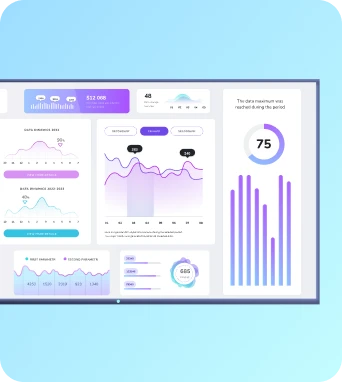Bluetooth beacons
Bluetooth beacons are small battery-powered devices that broadcast Bluetooth Low Energy signals to nearby receivers. They transmit identifiers which mobile apps or signage systems use to estimate proximity and trigger contextual actions, such as displaying targeted messages on TV dashboards, wayfinding cues, asset tracking updates, or location-based analytics.
Bluetooth beacons
How Bluetooth beacons work and what they broadcast
Bluetooth beacons operate using Bluetooth Low Energy, a power-frugal radio standard built into most modern smartphones, tablets and many signage media players. A beacon periodically broadcasts a small packet containing an identifier and optional payload fields; this packet is picked up by any compatible receiver within range. Common broadcast formats include Apple’s iBeacon and Google’s Eddystone, each offering slightly different data structures and capabilities such as URL broadcasting or telemetry. Receivers measure signal strength (RSSI) to estimate proximity and apply filtering, smoothing or trilateration to convert raw signals into actionable proximity zones like immediate, near or far. Environmental factors such as walls, human bodies and metal surfaces affect signal propagation, so practical accuracy tends toward room-level rather than precise centimetre-level positioning without additional calibration. On the signage side, beacons enable triggers that make content more relevant. A TV dashboard can be configured to show location-specific metrics when a beacon reports a nearby device or gateway; retail screens might display promotions when a tagged shopper approaches; workplace displays can switch to meeting-room schedules when an employee enters a zone. Integration often happens via a middleware layer or via the signage CMS polling a local gateway that aggregates BLE observations. For Fugo.ai users this means beacons can be incorporated into workflows that alter playlists, update data-driven widgets or signal event-based content changes, while the CMS handles security, scheduling and logging to maintain a coherent display strategy.
Deployment, management and privacy considerations
Successful deployment of beacons for digital signage begins with a site survey to determine optimal placement and density. Beacons should be positioned to reduce multipath reflections and shielded interference, typically mounted at chest or ceiling height depending on the use case. Coverage planning accounts for the beacon’s advertised range, battery life and expected foot traffic. In larger venues, a mix of fixed gateways and mobile receivers can aggregate beacon signals and forward them to the signage platform. Management tasks include inventorying beacon identifiers, tracking battery health, scheduling replacements and applying firmware updates where supported. Centralised management tools or asset management integrations are useful for scaling across dozens or hundreds of devices. Privacy and security must be treated as primary considerations. Beacons broadcast identifiers openly, so personalisation that relies on pairing these identifiers with personally identifiable information should be opt-in and transparent to users. GDPR and other data protection regimes require clear consent flows, data minimisation and secure storage when beacon-generated signals are linked to user profiles or analytics. From a security standpoint, use secure provisioning and rotate identifiers when possible; restrict administrative access to beacon management and monitor logs for anomalies. Operational resilience includes fallback strategies so signage displays remain meaningful if beacon infrastructure or mobile app interactions are unavailable, for example by providing default content or relying on scheduled playlists until context signals return.
Practical tips for integrating beacons with signage
Keep the learning going...
Biometric-triggered content
Biometric-triggered content uses biometric inputs such as facial analysis, voice, gait or gesture detection to adapt what displays on digital signage and TV dashboards in real time. It enables personalised messaging, contextual information or access prompts while imposing strict requirements for consent, data protection and secure integration into signage networks.
Blue light reduction displays
Blue light reduction displays are screens tuned or filtered to reduce short-wavelength blue light emission while preserving legibility and colour integrity. Used in digital signage and TV dashboards they aim to lower visual fatigue for prolonged viewers, support safer shift patterns and align with workplace display comfort practices without compromising message clarity.
Bluetooth device pairing
Bluetooth device pairing is the procedure that establishes a trusted wireless connection between a TV dashboard or digital signage player and a Bluetooth peripheral such as a keyboard, speaker, beacon or sensor. The process exchanges identity and encryption keys so devices can authenticate, bond and communicate reliably within a managed Fugo signage deployment.



